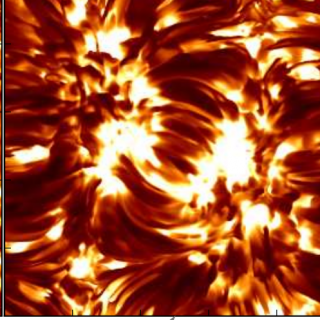Bibcode
McKenzie, David E.; Auchère, Frédéric; Kano, Ryouhei; Ishikawa, Ryohko; Trujillo Bueno, Javier; del Pino Alemán, Tanausú; Okamoto, Takenori J.; Song, Donguk; Yoshida, Masaki; Rachmeler, Laurel A.; Kobayashi, Ken; Hara, Hirohisa; Kubo, Masahito; Narukage, Noriyuki; Sakao, Taro; Shimizu, Toshifumi; Suematsu, Yoshinori; Bethge, Christian; De Pontieu, Bart; Dalda, Alberto Sainz; Vigil, Genevieve D.; Winebarger, Amy; Ballester, Ernest Alsina; Belluzzi, Luca; Štěpán, Jiří; Ramos, Andrés Asensio; Carlsson, Mats; Leenaarts, Jorrit
Referencia bibliográfica
Science Advances
Fecha de publicación:
2
2021
Número de citas
56
Número de citas referidas
54
Descripción
Routine ultraviolet imaging of the Sun's upper atmosphere shows the spectacular manifestation of solar activity; yet we remain blind to its main driver, the magnetic field. Here we report unprecedented spectropolarimetric observations of an active region plage and its surrounding enhanced network, showing circular polarization in ultraviolet (Mg II $h$ & $k$ and Mn I) and visible (Fe I) lines. We infer the longitudinal magnetic field from the photosphere to the very upper chromosphere. At the top of the plage chromosphere the field strengths reach more than 300 gauss, strongly correlated with the Mg II $k$ line core intensity and the electron pressure. This unique mapping shows how the magnetic field couples the different atmospheric layers and reveals the magnetic origin of the heating in the plage chromosphere.
Proyectos relacionados

Magnetismo, Polarización y Transferencia Radiativa en Astrofísica
Los campos magnéticos están presentes en todos los plasmas astrofísicos y controlan la mayor parte de la variabilidad que se observa en el Universo a escalas temporales intermedias. Se encuentran en estrellas, a lo largo de todo el diagrama de Hertzsprung-Russell, en galaxias, e incluso quizás en el medio intergaláctico. La polarización de la luz
Ernest
Alsina Ballester